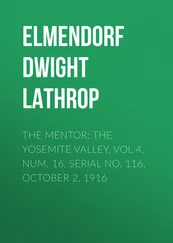Anne Blunt - A Pilgrimage to Nejd, the Cradle of the Arab Race. Vol. 2 [of 2]
Здесь есть возможность читать онлайн «Anne Blunt - A Pilgrimage to Nejd, the Cradle of the Arab Race. Vol. 2 [of 2]» — ознакомительный отрывок электронной книги совершенно бесплатно, а после прочтения отрывка купить полную версию. В некоторых случаях можно слушать аудио, скачать через торрент в формате fb2 и присутствует краткое содержание. ISBN: , Жанр: foreign_antique, foreign_prose, Путешествия и география, на английском языке. Описание произведения, (предисловие) а так же отзывы посетителей доступны на портале библиотеки ЛибКат.
- Название:A Pilgrimage to Nejd, the Cradle of the Arab Race. Vol. 2 [of 2]
- Автор:
- Жанр:
- Год:неизвестен
- ISBN:http://www.gutenberg.org/ebooks/42217
- Рейтинг книги:4 / 5. Голосов: 1
-
Избранное:Добавить в избранное
- Отзывы:
-
Ваша оценка:
- 80
- 1
- 2
- 3
- 4
- 5
A Pilgrimage to Nejd, the Cradle of the Arab Race. Vol. 2 [of 2]: краткое содержание, описание и аннотация
Предлагаем к чтению аннотацию, описание, краткое содержание или предисловие (зависит от того, что написал сам автор книги «A Pilgrimage to Nejd, the Cradle of the Arab Race. Vol. 2 [of 2]»). Если вы не нашли необходимую информацию о книге — напишите в комментариях, мы постараемся отыскать её.
A Pilgrimage to Nejd, the Cradle of the Arab Race. Vol. 2 [of 2] — читать онлайн ознакомительный отрывок
Ниже представлен текст книги, разбитый по страницам. Система сохранения места последней прочитанной страницы, позволяет с удобством читать онлайн бесплатно книгу «A Pilgrimage to Nejd, the Cradle of the Arab Race. Vol. 2 [of 2]», без необходимости каждый раз заново искать на чём Вы остановились. Поставьте закладку, и сможете в любой момент перейти на страницу, на которой закончили чтение.
Интервал:
Закладка:
February 13. – We have travelled quite twenty-four miles to-day, having had nothing to distract our attention from the road, and have reached the first of the reservoirs of Zobeydeh.
To my surprise this, instead of being on low ground, is as it were on the top of a hill. At least, we had to ascend quite two hundred feet to get to it, though there was higher ground beyond. It is built across a narrow wady of massive concrete, six feet thick, and is nearly square, eighty yards by fifty. The inside descends in steps for the convenience of those who come for water, but a great rent in the masonry has let most of this out, and now there is only a small mud-hole full of filthy water in the centre. We found some Arabs there with their camels, who went away when they saw us, but we sent after them to make inquiries, and learnt that they were Beni Wáhari, a new artificial compound tribe of Sherârat, Shammar and others, made up by Ibn Rashid with a slave of his own for their Sheykh. They are employed in taking care of camels and mares for the Emir. They talk of eight days’ journey now to Meshhed Ali, but Wilfrid says it cannot be less than fifteen or sixteen.
Mohammed, who has been very anxious to make himself agreeable, now he is quite away from Haïl influences, has been telling us a number of stories and legends, all more or less connected with his birthplace Tudmur. He has a real talent as a narrator, an excellent memory, and that most valuable gift, the manner of a man who believes what he relates. Here is one of his tales, a fair specimen of the extraordinary mixture of fable and historic tradition to be found in all of them:
Suliman ibn Daoud (Solomon, son of David) loved a Nasraniyeh (a Christian woman), named the Sitt Belkis, 8 8 Belkis is the name usually given by tradition to the Queen of Sheba.
and married her. This Christian lady wished to have a house between Damascus and Irak (Babylonia), because the air of the desert was good, but no such a house could be found. Then Solomon, who was king of the birds as well as king of men, sent for all the birds of the air to tell him where he should look for the place Belkis desired, and they all answered his summons but one, Nissr (the eagle), who did not come. And Solomon asked them if any knew of a spot between Damascus and Irak, in the desert where the air was good. But they answered that they knew of none. And he counted them to see if all were there, and found that the eagle was missing. Then he sent for the eagle, and they brought him to Solomon, and Solomon asked him why he had disobeyed the first summons. And Nissr answered, that he was tending his father, an old eagle, so old that he had lost all his feathers, and could not fly or feed himself unless his son was there. And Solomon asked Nissr if he knew of the place wanted by Belkis; and Nissr answered that his father knew, for he knew every place in the world, having lived four thousand years. And Solomon commanded that he should be brought before him in a box, for the eagle could not fly. But when they tried to carry the eagle he was so heavy that they could not lift him. Then Solomon gave them an ointment, and told them to rub the bird with it and stroke him thus, and thus, and that he would grow young again. And they did so, and the feathers grew on his back and wings, and he flew to Solomon, and alighted before the throne. And Solomon asked him, “where is the palace that the Sitt Belkis requires, between Damascus and Irak, in the desert where the air is good?” and the eagle answered, “It is Tudmur, the city which lies beneath the sand.” And he showed them the place. And Solomon ordered the jinns to remove the sand, and when they had done so, there lay Tudmur with its beautiful ruins and columns.
Still there was no water. For the water was locked up in a cave in the hills by a serpent twenty thousand double arms’ length long, which blocked the mouth of the cave. And Solomon called on the serpent to come out. But the serpent answered that she was afraid. And Solomon promised that he would not kill her. But as soon as she was half way out of the cave (and they knew it by a black mark on her body which marked half her length), Solomon set his seal upon her and she died. And the jinns dragged her wholly out and the water ran. Still it was poisonous with the venom of the serpent, and the people could not drink. Then Solomon took sulphur (kubrit) and threw it into the cave, and the water became sweet. And the sulphur is found there to this day.
Mohammed says also that ghosts (afrit) are very common among the ruins at Tudmur – also (more curious still) that there is a man at Tudmur more than a hundred years old, and that when he reached his hundredth year he cut a complete new set of teeth, and is now able to eat like a young man. 9 9 I have since been told by dentists that the fact of a third set of teeth being cut in old age is not unknown to science.
So he beguiled the evening.
February 14. – We have passed more birkehs in better repair than the first, and being now in the neighbourhood of water, find a good many Bedouins on the road. Jedur (the Shammar with the mother, with whom we are still travelling, and whom we like particularly) knows everybody, and it is well that he is with us, as some of these Bedouins are rough looking fellows with hang-dog countenances (especially the Dafir and the Sellem), which we don’t quite like. To-day, as Wilfrid and I were riding apart from our caravan, a number of men ran towards us without any salaam aleykum and began calling to us to stop. But we did not let them get within arm’s length, and bade them ask their questions from a distance. We shall have to keep watch to-night. The road is now regularly marked out with a double wall, which we are told was built by Zobeydeh to hang an awning from, so that the pilgrims might travel in the shade. But this must be nonsense. It is more likely that it is merely the effect of the road having been cleared of the big stones which here cover the plain.
Since writing this a curious thing has happened. We encamped early inside a ruined birkeh and had just got all in order for the night, when we perceived six men on dromedaries riding down from the northeast, straight towards us. There was much speculation of course amongst us, as to who they might be, honest men or robbers, Shammar or Dafir. They evidently were not a mere party of camels for the Haj, as each delúl was mounted by a man with a lance, and they came on at a trot. They rode straight to where we were, made their camels kneel down, took off khurjs and shedads and then arranged their bivouac for the night. Then they came up to our tents and accosted Mohammed and the servants, who of course invited them to sit down and drink coffee. Mohammed presently came to us and whispered that he felt convinced they were Dafir, but that we should presently know for certain. They sat down and began talking on general subjects, as the custom is till coffee has been served, but afterwards Mohammed asked them whence they had come and whither they were going. They answered that they were Ketherin, sent by their Sheykh to Haïl on business, and explained further that their object was to find a certain relative of their Sheykh’s whom he had heard of as being a guest at Ibn Rashid’s and to invite him to their tents. Perhaps we might have heard of him, his name was Mohammed ibn Arûk. And their Sheykh’s name? Muttlak ibn Arûk! Here is a coup de théâtre ! Mohammed’s long-lost relation, the third brother of the three who left Aared in the eighteenth century and parted company at Jôf, has been discovered in his descendant, whose servants are at this moment in our camp. Imagine the joy of Mohammed and the triumph of so appropriate an occasion for reciting once more the kasid Ibn Arûk! The rhymes of that well-known legend, recited by Mohammed and responded to by the new comers in chorus, were indeed the first intimation we had of what had happened. Then the Ketherin ambassadors were brought to our tent and their story told. Now all ideas of Bussorah and Meshhed Ali and the Haj are abandoned, and, for the moment, there is no other plan for any of us but an immediate visit to these new relations. One of the Ketherin has already started off homewards to announce the joyful event, and the rest will turn back with us to-morrow. Muttlak’s tents are not more than a day’s journey from where we now are, and we shall see these long-lost cousins to-morrow before the sun goes down. “Yallah,” exclaimed Mohammed, beaming with joy and pride.
Читать дальшеИнтервал:
Закладка:
Похожие книги на «A Pilgrimage to Nejd, the Cradle of the Arab Race. Vol. 2 [of 2]»
Представляем Вашему вниманию похожие книги на «A Pilgrimage to Nejd, the Cradle of the Arab Race. Vol. 2 [of 2]» списком для выбора. Мы отобрали схожую по названию и смыслу литературу в надежде предоставить читателям больше вариантов отыскать новые, интересные, ещё непрочитанные произведения.
Обсуждение, отзывы о книге «A Pilgrimage to Nejd, the Cradle of the Arab Race. Vol. 2 [of 2]» и просто собственные мнения читателей. Оставьте ваши комментарии, напишите, что Вы думаете о произведении, его смысле или главных героях. Укажите что конкретно понравилось, а что нет, и почему Вы так считаете.
![Anne Blunt A Pilgrimage to Nejd, the Cradle of the Arab Race. Vol. 2 [of 2] обложка книги](/books/750183/anne-blunt-a-pilgrimage-to-nejd-the-cradle-of-the-cover.webp)











